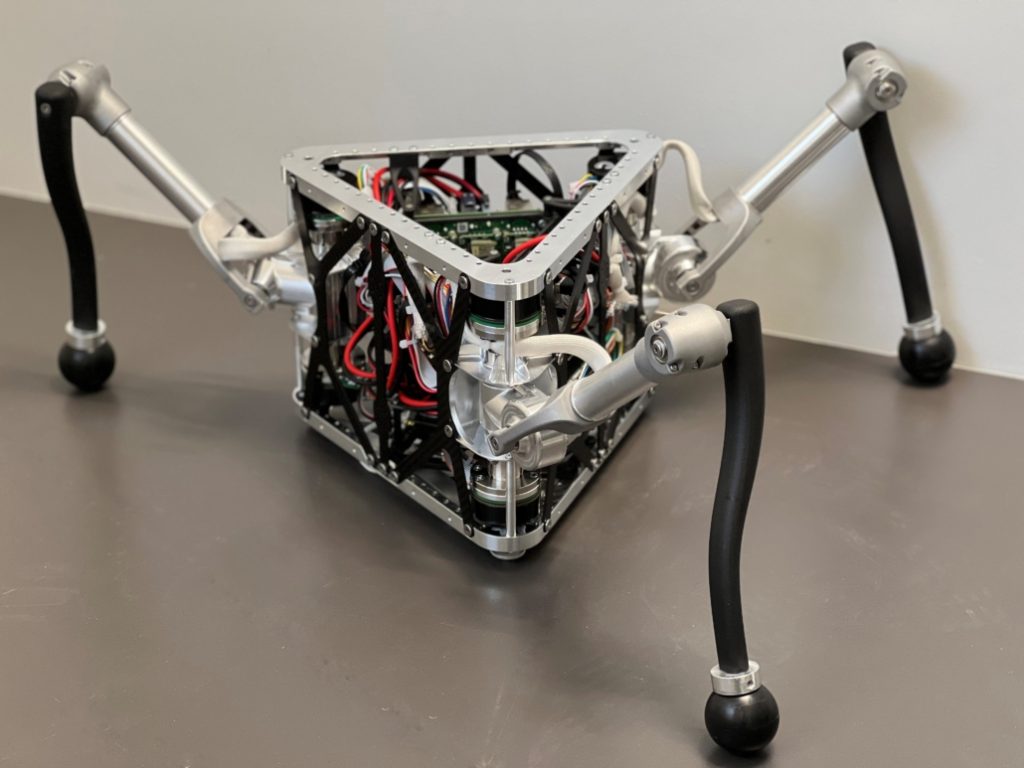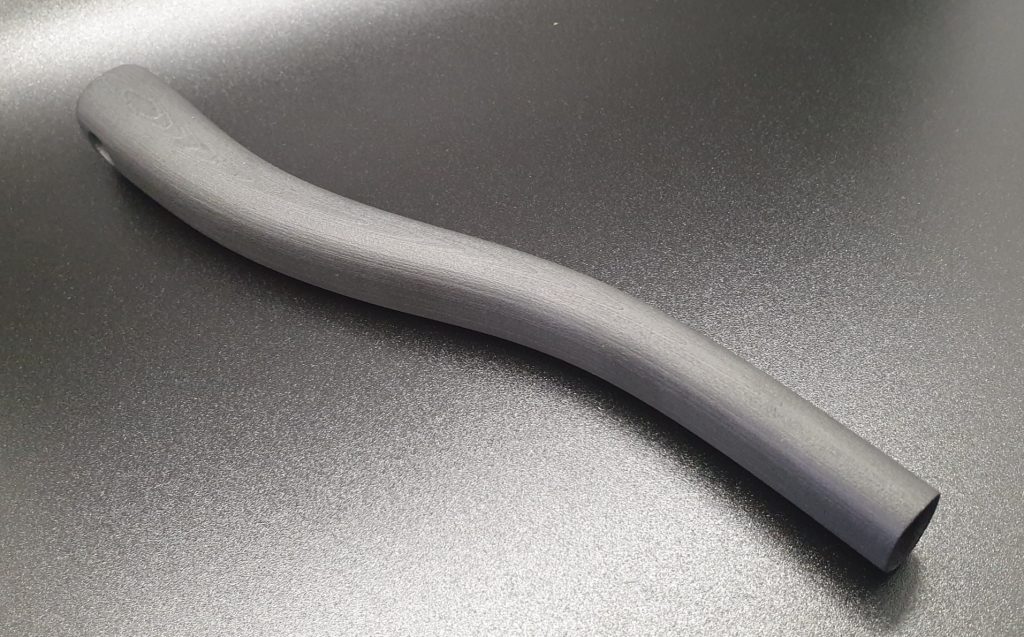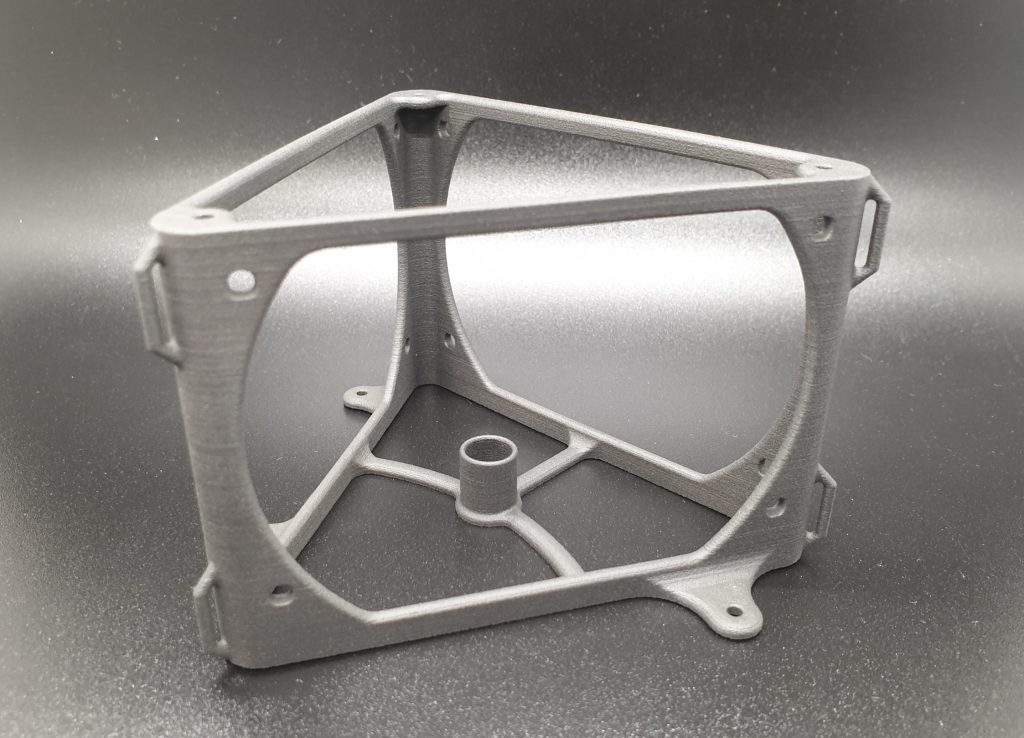Researchers at ETH Zurich have utilized 3D printing to build a robot designed for ‘bouncing’ from asteroid-to-asteroid in outer space.
Developed alongside colleagues at ZHAW, ETH Zurich’s SpaceHopper is a three-legged device with partially-3D printed limbs made from carbon fiber-reinforced materials, enabling them to be both robust and ultra-lightweight. While the initial build is merely a prototype, its creators one day aim to deploy their low-gravity locomotion platform onto asteroids, where it can help identify valuable resources.
“Asteroids are the building blocks of our solar system. They are abundant and will be a key resource for human presence in space,” explain the SpaceHopper team. “However, their challenging environment calls for new, unique solutions. Our robot named SpaceHopper seeks to be just that. We think it will enable a broad range of new missions to explore this vast uncharted part of our solar neighborhood.”

Building a bouncing space robot
When the SpaceHopper’s creators set out to build the bot nine months ago, they pitched it as an exploration vehicle, capable of not only uncovering lucrative resources in space, but answers to some of scientists’ most fundamental questions.
In principle, the robot’s jumping mechanism was designed to enable it to make huge leaps in zero-gravity conditions, while also carrying scientific gear and moving in tighter spaces where needed. Compared to previous landers, the team aimed to provide the SpaceHopper with more precise landing capabilities as well, so that it’d be able to minimize bouncing and better protect payloads.
Fast-forward to last month, and the engineers have turned their vision into reality, by rolling out their first prototype. So how did they accomplish this? One way the team have brought their plans to fruition is their partnership with Scheurer Swiss.
Following in the footsteps of previous ETH Zurich alumni, who worked with the firm to 3D print a ‘Rowesys’ weeding robot last year, the researchers found its additive manufacturing portfolio to be ideal for their build. Specifically, using the technology alongside Scheurer Swiss, the team have been able to make the bot’s legs thin-walled while driving down their weight, without reducing their resilience.
“We are glad to have Scheurer Swiss on our side as a lightweight design expert,” explains one of the SpaceHopper’s designers, Emma Steinke. “The competent expertise around state-of-the-art fiber composite technologies and 3D printing as well as the large network of Scheurer Swiss were very valuable for us, and contributed to the success of our focus project from the very beginning.”

According to Dominik Scheurer, CEO of Scheurer Swiss, 3D printing was also “the ideal manufacturing process” for the project, as it allowed “virtually any shape can be produced.” As such, using the technology to create the bot’s legs unlocked a high level of customization and cost efficacy, while yielding a design optimized for low-gravity hopping.
The resulting three-legged robot is said to be self-righting and capable of carrying out controlled landings, as well as being programmable via deep reinforcement learning. Using this skill set, the SpaceHopper’s developers say it could be ideal for exploring asteroids like Ceres and Psyche, which are known to feature large quantities of water and heavy metals respectively.
“3D printing is currently one of the most modern lightweight construction technologies and is shaping the future of the manufacturing industry like hardly any other process,” added Scheurer. “The intention is clear: even more flexibility, creativity and cost-efficiency in product development.”

Exploring space: the final frontier
As 3D printing has continued to find new aerospace applications, it has often been used to create devices which facilitate the exploratory ambitions of Western space agencies. Late last year, it was revealed that Lockheed Martin has begun using MakerBot technology to 3D print ABS parts of a lunar rover it’s developing for NASA’s Artemis mission.
Likewise, Aerojet Rocketdyne has developed a 3D printed quad thruster that’s designed to unlock low-cost space exploration missions. Using nTopology software, the firm is said to have reduced the weight of one of the thruster’s key elements by 67%, in a way that made it faster, more sustainable and two-thirds cheaper to manufacture.
MX3D has even used the technology to build a material-efficient 3D printed lunar ‘skeletal floor’ for a prototype European Space Agency (ESA) Moon settlement. When unveiled, it was said that the lightweighted 395-kilo web-like steel structure could serve as a base on which future lunar regolith-based structures are built.
To stay up to date with the latest 3D printing news, don’t forget to subscribe to the 3D Printing Industry newsletter or follow us on Twitter or liking our page on Facebook.
For a deeper dive into additive manufacturing, you can now subscribe to our Youtube channel, featuring discussion, debriefs, and shots of 3D printing in-action.
Are you looking for a job in the additive manufacturing industry? Visit 3D Printing Jobs for a selection of roles in the industry.
Featured image shows the ‘SpaceHopper’ asteroid-exploring robot. Photo via Scheurer Swiss.


